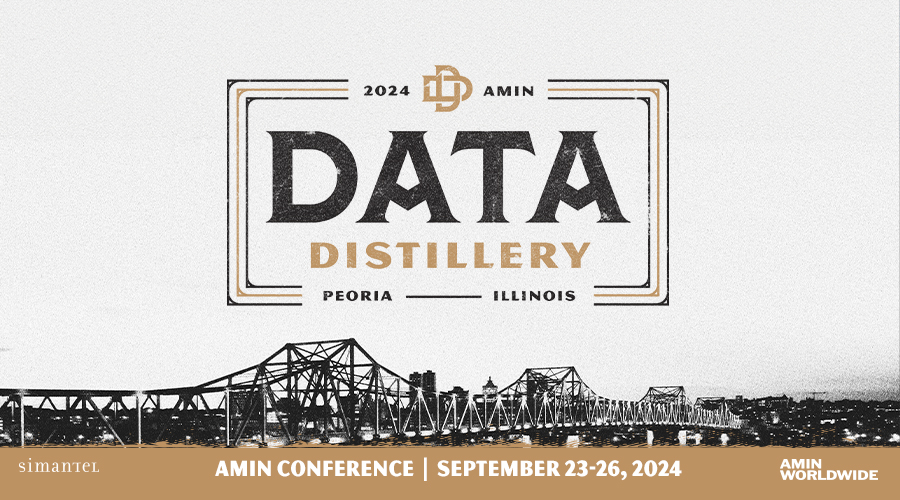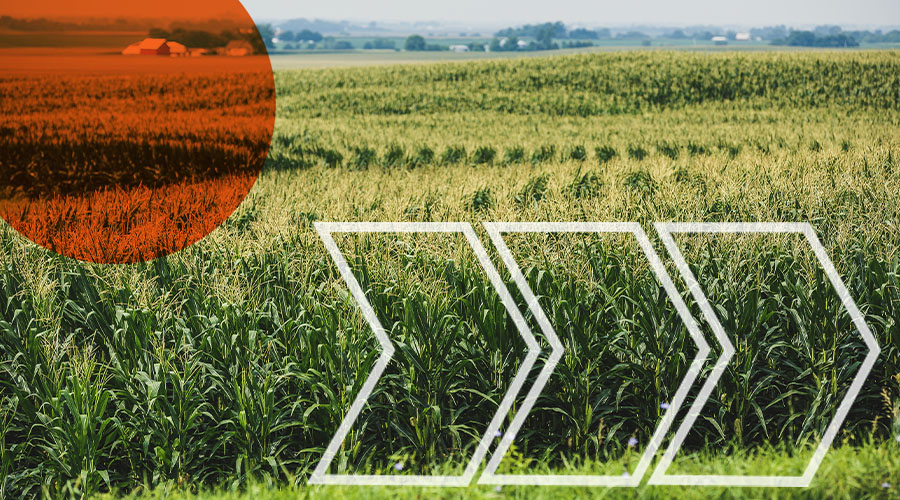I’ll be honest: when I started at Simantel, I didn’t envision a workday where I’d be holding my breath from an onslaught of spraypaint, dressed in my colleague’s weekend work clothes, as we tagged flood bags along the river. But there I stood, covered in sweat and paint, hoping we would finish before Steamboat festivities kicked off.
When people in Central Illinois say, “knee high by the fourth of July” they’re usually referring to corn. But this year, they might as well have been talking about the river spilling into our downtown. During Steamboat, we knew that people would look to see how well the sandbags were holding back the water. While the chaos from a flood is never welcomed, my team at Simantel found those sandbags to be a helpful entry point to a conversation we’re trying to spark community-wide: the importance of stormwater management in Peoria.

Why We’re Talking Water

We were approached by the City of Peoria Public Works to help them communicate the issues caused by stormwater and to explain the combined sewer overflows plaguing our river.
Everyone knows storms can be damaging — fallen trees, downed power lines, wind-ravaged yards. What we often don’t consider is the consequences of seemingly mild rainfall and snowmelts. All wet weather leaves an impact.
Humans have changed the way our weather is absorbed. We’ve laid down pavement, built wide roofs and even reconstructed streams and brooks so they suit our property instead of their purpose, all the while inhibiting the natural water cycle. The rainfall hits impervious areas, becoming runoff that collects pollutants and germs as it crosses over man-made surfaces, and flows right back to our waterways untreated.
Not only are we causing problems, we have made little to no effort to offset the damage we’ve done. Most of us don’t even know we are contributing to the destruction of our local waterways.
One particular type of stormwater problem is getting the attention of the EPA. Combined sewer overflows are a topic that would be deemed inappropriate at the dinner table. When I first learned what they were, I was shocked people weren’t widely discussing the topic. Everyone in our city should know what CSOs are. Their (continued) existence changes the way you see our river. Peoria needs to find a lasting solution that will resolve them once and for all.
For months, Simantel has worked with Public Works to present these problems in a clear, accessible way. We’ve helped the City write and organize content around the topic, created an online hub at OneWaterPeoria.com and have helped in the formation and implementation of the OneWater Committee.
Where Job Duty and Civic Duty Blur

As a writer, research is a key part of the job. After all, they tell you to write what you know, so you must spend time learning. The more you read, the more questions develop until you find yourself deeply immersed in a topic.
The more I’ve learned about these topics professionally, the stronger I feel personally. While I’m far from an expert, working on this project has made me deeply aware of a community issue I was routinely overlooking.
My job forced me to pay attention to stormwater, but I’m glad it did. I had never considered where the rain and snowmelt drains off of my property. I had never looked to see if inlets on my street were blocked. I didn’t know that where you clean your car matters.
If like me, you hadn’t given these subjects much thought, please check out OneWaterPeoria.com and learn more. Also, feel free to attend the OneWater Committee meetings.
That Friday, with the river rising and Steamboat fast approaching, we saw an opportunity to capitalize on people’s curiosity. People pay attention to major water events. Our current challenge is to get them to pay attention to the minor ones. Thanks to this project, I’m now officially taking note.





